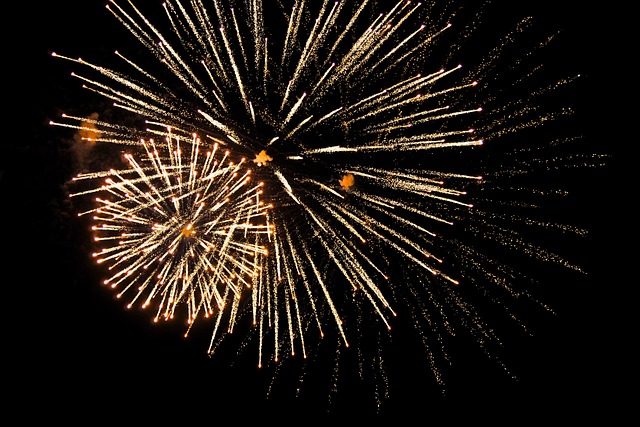November kicks off with Mercury making a brilliant evening appearance, then continues with not one, but three meteor showers. The largest full moon of the year rises early in the month, while a later “micro” new moon offers ideal darkness for harder-to-spot constellations like Orion and Taurus.
Here are 10 celestial events to watch for in November—and when to look up to catch them.
Mercury reaches its highest altitude in the evening sky—November 1–2
The smallest planet in our solar system is notoriously tricky to spot. Its orbit keeps it extremely close to the sun, which means the sun’s light can drown it out—not to mention it’s only visible around low on the horizon around sunset or sunrise. But on the first evenings of November, Mercury climbs to its highest point in the night sky, offering one of the best chances all year to see it with the naked eye.
Exactly how high depends on your location: Mercury will appear higher in the night sky the closer you get to the equator, while high-latitude destinations might not see Mercury at all.
The Southern Taurid meteor shower peaks—November 4–5
The Southern Taurid Meteor Shower has two peaks: the first is in mid-October, and the second is in early November. While this is typically a low-frequency meteor shower, around five shooting stars per hour, 2025 is expected to be one of those rare fireball swarm years, when exceptionally bright meteors—some shining brighter than Venus—light up the sky. The best time to look up is the night of November 4 into the early hours of November 5.
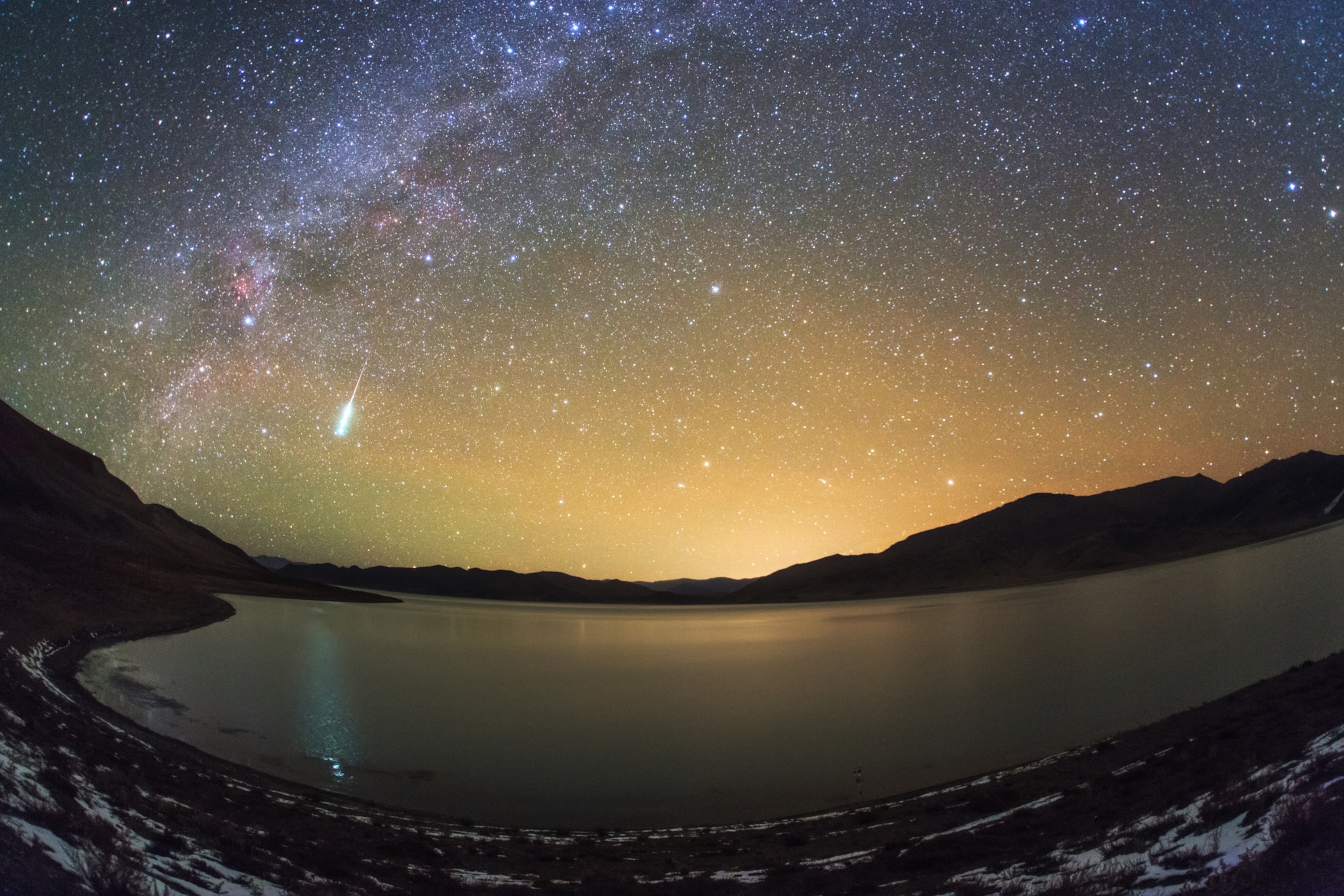
A Taurid meteor streaks over Yamdrok Lake, one of Tibet’s three sacred lakes, in November 2015. The annual Taurid meteor showers appear each November as Earth passes through debris left behind by Comet Encke—sometimes producing spectacular fireballs.
Jeff Dai, Science Photo Library
Super “beaver moon”—November 4–5
November’s full moon reaches peak brightness at 13:19 UTC on November 5, although it will appear full on the nights of November 4 and 5. Known as the “beaver moon,” the name comes from seasonal traditions—when beavers fortify their dams for winter and, historically, trappers once sought their thickest pelts.

LIMITED TIME OFFER
(How to watch the rare streak of 3 supermoons happening back-to-back.)
It’s also a “supermoon,” which occurs when the full moon coincides with the moon’s perigee, or the point in its orbit when it’s closest to Earth. As a result, it will appear slightly larger and brighter than a typical full moon—the largest full moon of 2025.
Close approach of the moon and the Pleiades—November 6
Just after the full moon, the moon passes close to the Pleiades star cluster—also known as Messier 45—on the night of November 6. The two will appear less than a degree apart in the night sky—49 arcminutes, to be exact.
The Pleiades is an open star cluster made up of more than 1,000 hot, young stars. Known as the Seven Sisters, it forms one of the sky’s most recognizable patterns—even though only six of its brightest stars are typically visible to the naked eye.
The Northern Taurid meteor shower peaks — November 11–12
The second meteor shower of the month, the Northern Taurids, is expected to peak on the night of November 11 into the morning of November 12, per the American Meteorological Society. Like the Southern Taurids, this meteor shower is relatively weak, with an average rate of just five shooting stars per hour. When the two showers overlap as they do in 2025, however, the odds of bright fireballs increase.
(This rare green comet won’t return for a thousand years. Here’s how to see it this week.)
Both Taurid meteor showers share the same source material: the debris trail of the comet Encke. Over time, the comet’s dust trail has spread wide enough to create two separate but overlapping meteor streams.
Leonid meteor shower peaks — November 17–18
The Leonid Meteor Shower is expected to peak overnight from November 17 to 18, when Earth passes through debris from Comet Tempel-Tuttle. The waning crescent moon will be just 9 percent full, offering dark conditions for this late-autumn display.
You May Also Like
The Leonids are famous for their historic outbursts of shooting stars, but in most years and most likely in 2025, they produce a steady show of up to 15 meteors per hour under ideal conditions.
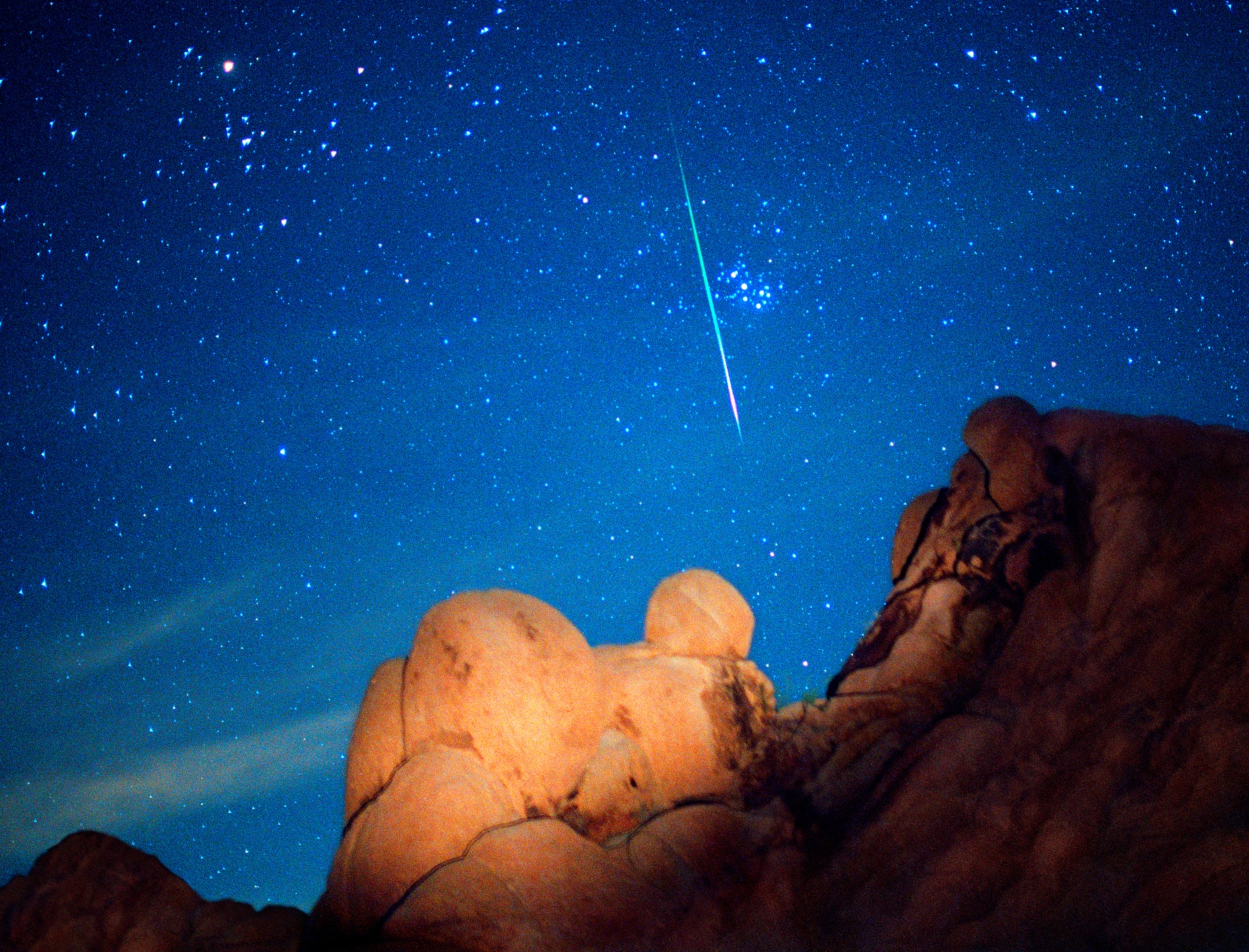
A Leonid meteor streaks past the Pleiades star cluster in the skies above Joshua Tree National Park in 2001. The annual Leonid meteor shower peaks around November 17, when Earth passes through debris from Comet Tempel-Tuttle, sending fast-moving dust particles blazing through our atmosphere.
Walter Pacholka, Astropics/Science Photo Library
A micro new moon—November 20
The new moon on November 20 occurs near lunar apogee, the farthest point in the moon’s orbit from Earth, making it a so-called “micro” new moon. Of course, because it’s a new moon, you won’t be able to see the moon at all—it’ll appear completely dark in the night sky, with only its far side illuminated by the sun.
(These are the world’s best stargazing spots.)
But with no moonlight to interfere, it’s the best night of the month for viewing faint deep-sky objects—such as star clusters, nebulae, and distant galaxies—with the naked eye, binoculars, or a backyard telescope.
Uranus at opposition—November 21
The farthest planet in our solar system, Uranus, reaches opposition on November 21, when it lies directly opposite the sun in Earth’s sky. This means the planet will shine at its brightest, though it’s still quite dim.
At magnitude +5.6, Uranus is visible with binoculars in the constellation Aries, though it’ll look just like a star. Through a more powerful telescope, it will appear as a tiny blue-green disk.
The Hyades star cluster is well-placed—November 27
The Hyades open star cluster will be perfectly positioned for viewing in late November, reaching its highest point in the night sky around midnight local time.
Located in the constellation Taurus, just 150 light-years from Earth, this V-shaped cluster of stars forms the face of the bull.
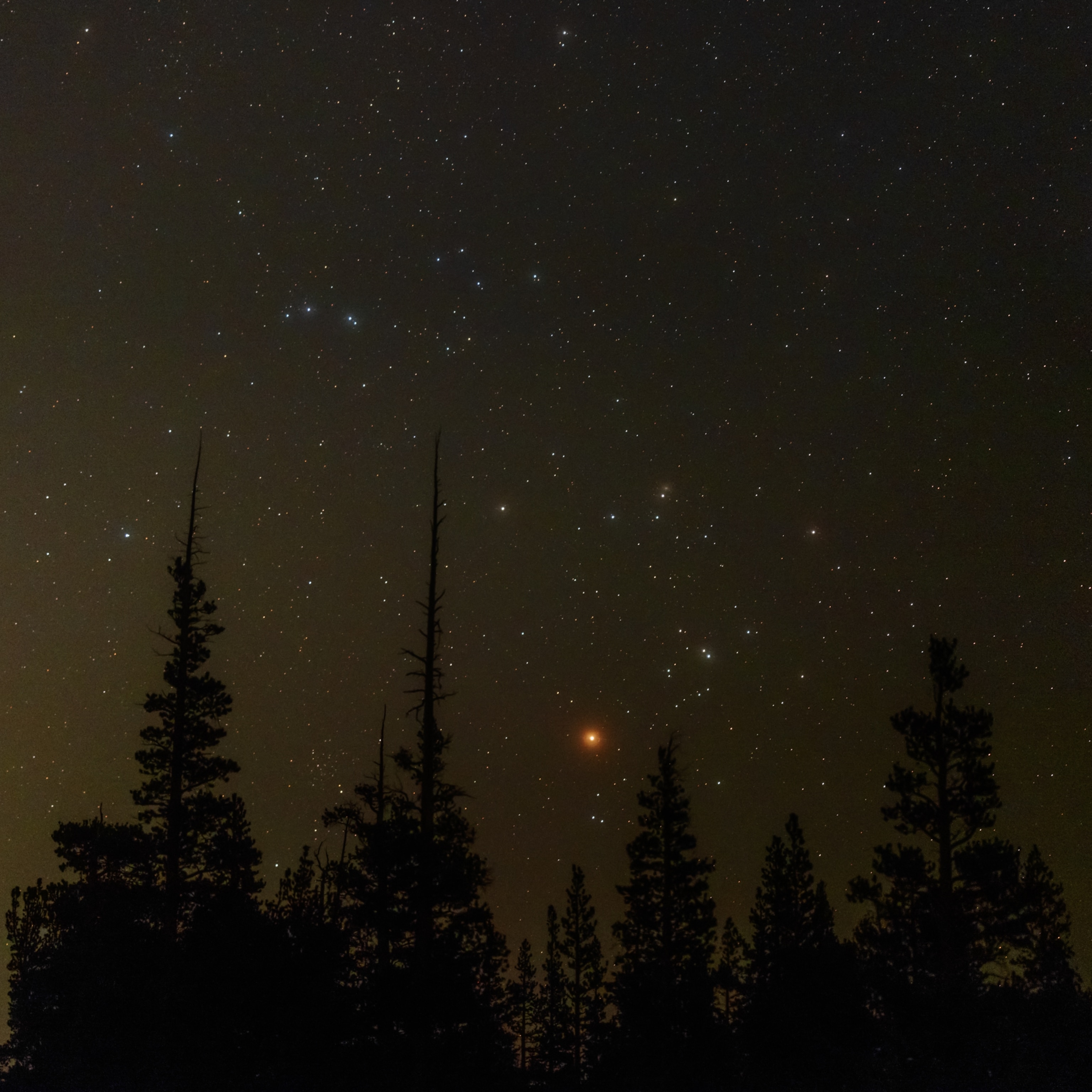
The Hyades and Pleiades star clusters shine in the constellation Taurus above the bright orange star Aldebaran.
Babak Tafreshi, Nat Geo Image Collection
Northern Hemisphere winter/Southern Hemisphere summer constellations return throughout the month
In November, Northern Hemisphere winter and Southern Hemisphere summer constellations begin their return to prime view.
(How to take stellar photographs of the night sky.)
Some of the rising constellations include Orion, one of the most easily identifiable constellations thanks to the famous three-star belt, and Taurus, which is not only the home of the Hyades cluster, but also the point from which both Taurid meteor showers appear to emanate.
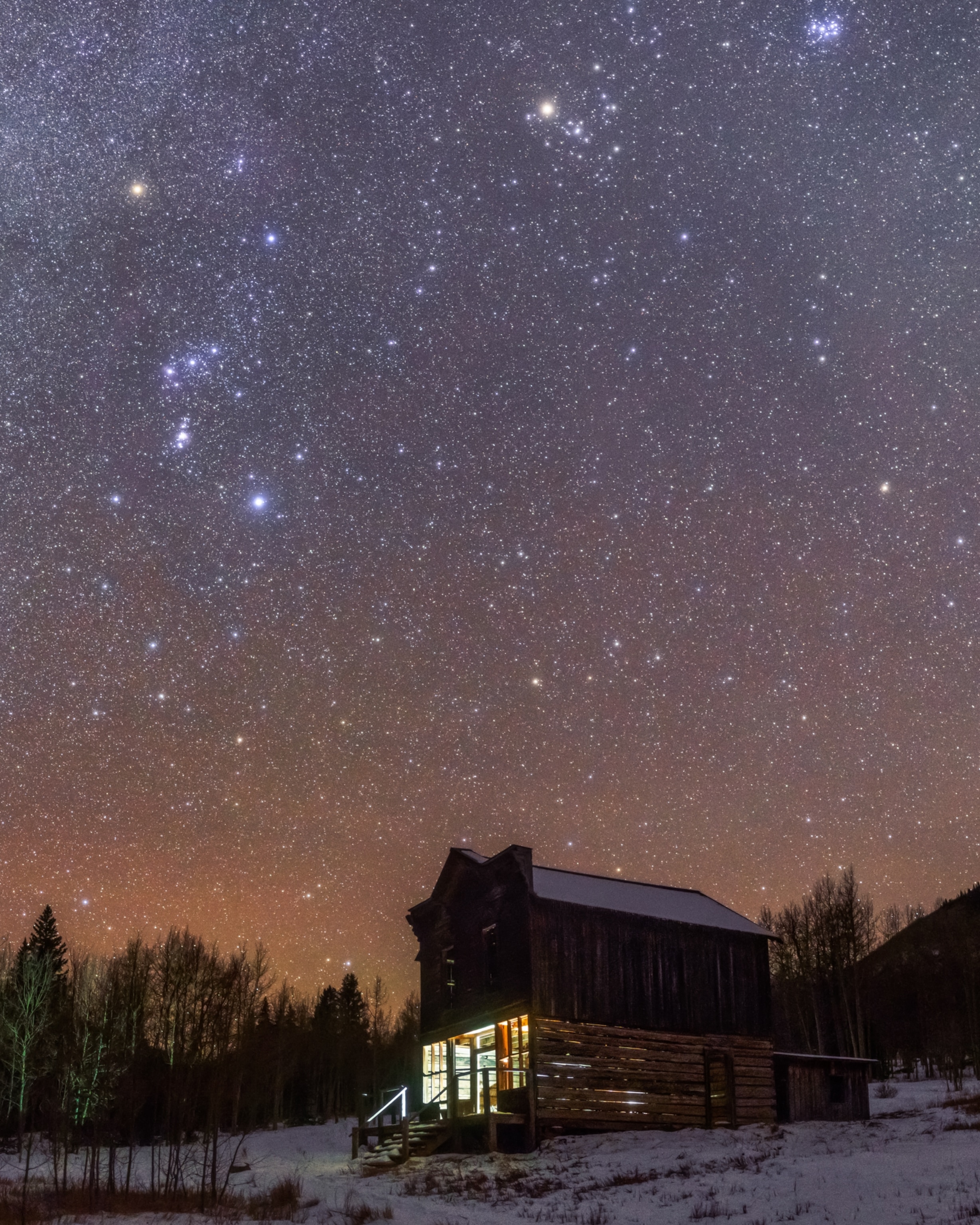
The constellations Orion and Taurus shine above the historic Ashcroft Ghost Town in Colorado in 2018.
Babak Tafreshi, Nat Geo Image Collection

